How Can We Tell If A Space Rock Came From Outside Our Solar System?
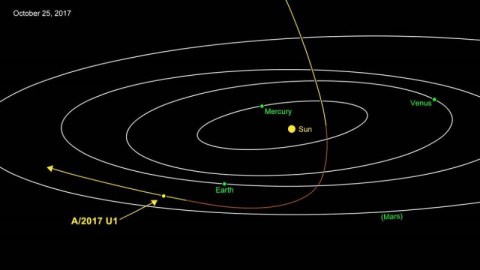
The discovery of the first-ever asteroid to arrive from interstellar space is full of lessons for us all.
On October 19th, astronomers discovered an objectunlike any other we’d seen before: a massive point of light hurtling through the inner Solar System. Sure, that might sound like any old asteroid or comet that just happens to pass close to the Sun, but this one was special. Unlike all the others we’ve ever seen, which came from the asteroid belt, the Kuiper belt, or even far out from the Oort cloud, this one was completely different. In fact, astronomers concluded, it came from outside the Solar System entirely. It’s one thing to be told that this is the case, but it’s quite another to understand how we know it must be so. Let’s find out!
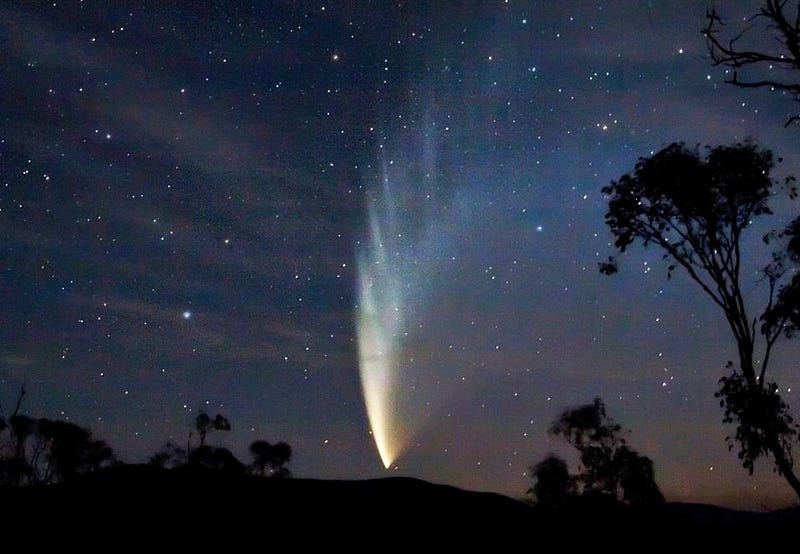
When an object passes close to the Sun, that’s the way to tell whether it’s asteroid-like or comet-like. If you develop a large tail, you likely formed in the outer Solar System, and are full of ices and other volatiles. The whole reason comets have two tails — a blue, straight one and a white, curved one — is because of these volatiles, where the straight one is due to ions and the curved one is due to dust. But asteroids are much lower in volatiles, and tend to produce tails only for short amounts of time (for a few passes only), after which you’re just left with a solid core.

When we observed this suspicious object with the Pan-STARRS telescope, famed for its rapid coverage of nearly the entire sky, what we saw indicated an object that was close by, modestly reflective, and completely without a tail or coma. It was entirely asteroid-like in nature, despite being so close by, in the inner Solar System. This definitely told us it was asteroidal in nature, or — at the very least — all that remained of it was a solid, non-volatile core.
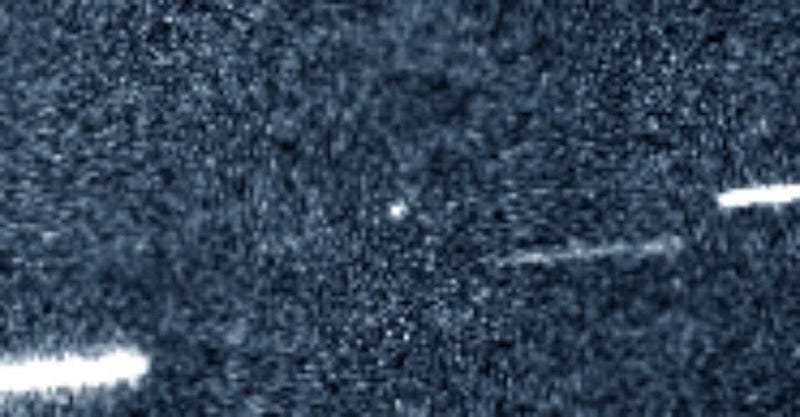
But when we examined its orbital properties, a real shock came. First off, it’s highly inclined to the plane of the Solar System, something that normally only occurs for object originating from the Oort cloud or the outer Kuiper belt. An asteroid like this is virtually unheard of. Second off, it was moving fast; far too fast to have been caused by conventional means. Even if you began with this object an infinite distance away and let the full gravitational effects of the Solar System pull it in, it wouldn’t be moving this quickly. The only way to get an object moving at these tremendous speeds is with a gravitational encounter with a very massive planet: a gas giant.
But that’s where the third surprise comes in. If you trace back its orbital path, there’s no way it could have occurred that way. None of the planets encountered it in the past; it’s completely gravitationally unbound.
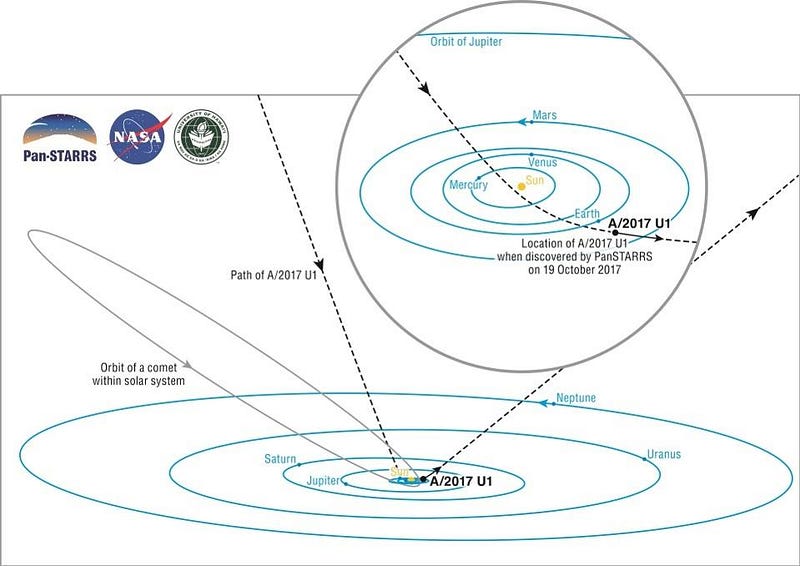
You can imagine that there are massive objects out there in the outer Solar System, such as in the distant Oort cloud. You can imagine that, perhaps, ideas like Planet Nine are not only valid, but that there are many such massive objects. Yet even if that’s the case, they can’t explain this object. Gravitational encounters with even massive worlds could impart speeds of up to 1,000 meters/second to it, as recent research has shown. Yet from observations of A/2017 U1, we know it came into our Solar System at speed in excess of 20,000 meters/second. There’s no way it came from the asteroid belt, the Kuiper belt, or even the Oort cloud.
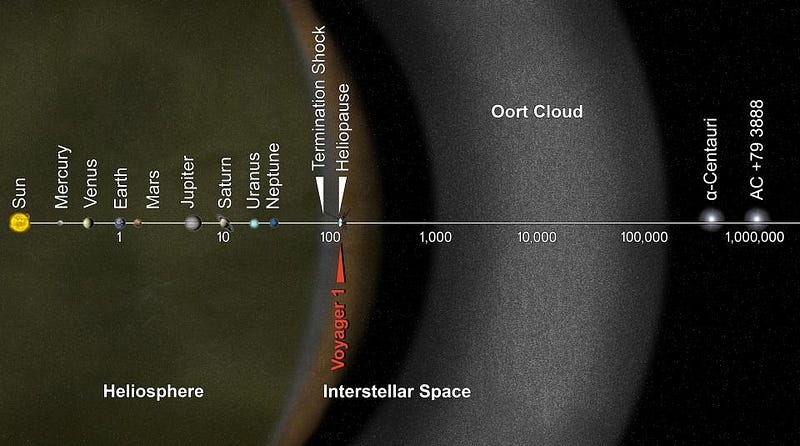
The only option left, then, is that it came from another Solar System! This isn’t entirely surprising, since we live in a galaxy filled with hundreds of billions of stars, and we know that asteroids and comets both get ejected from our own Solar System quite routinely, owing to gravitational interactions. Interstellar space must be filled with such minor planets, with this one only a few hundred meters across. With its:
- incredibly high eccentricity of ~1.2, versus a maximum of around 1.002 for objects originating within our Solar System,
- incredibly high speed-at-infinity of ~20,000+ meters/second, versus a maximum of around 1,000 meters/second for those originating here,
- and its lack of encounters with massive objects (like Jupiter) capable of accelerating it to such high speeds,
the conclusion is inescapable; this object is from beyond our Solar System.

So what does that all mean? It means that, for the first time, we’ve discovered and verified an object from outside our Solar System coming to visit. It means we have confirmation that even if we solve the problem of planetary protection from asteroids and comets within our Solar System, we’ll have these outsiders to contend with. And it means that we’ve demonstrated that we have the capabilities to find and detect these alien visitors. According to Paul Chodas, the manager of the Center for Near Earth Object Studies (CNEOS):
“We have been waiting for this day for decades. It’s long been theorized that such objects exist — asteroids or comets moving around between the stars and occasionally passing through our solar system — but this is the first such detection. So far, everything indicates this is likely an interstellar object.”
If you’re moving too fast and you didn’t encounter any planets on your way in, we can tell that you’re not from around here. We fully expect its density and physical properties to be different from asteroids in our own Solar System as well. Perhaps, by time we detect the next such interloper, we’ll be ready to find out!
Ethan Siegel is the author of Beyond the Galaxy and Treknology. You can pre-order his third book, currently in development: the Encyclopaedia Cosmologica.





